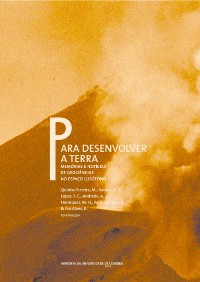Please use this identifier to cite or link to this item:
https://hdl.handle.net/10316.2/31482| Title: | Zonamento geotécnico de um terreno com estruturas arqueológicas no mosteiro de Lorvão, Penacova, Portugal | Other Titles: | Geotechnical zonning of a terrain containing archaeological structures at the Lorvão Monastery, Penacova, Portugal | Authors: | Quinta‑Ferreira, M. Henriques, J. Velho, J. Oliveira, M. A. |
Keywords: | Geotechnical zoning;Schist;GeoGauge;Nuclear Gauge;Geomechanical classification RMR;Zonamento geotécnico;Xistos;GeoGauge;Gamadensímetro;Classificação geomecânica RMR | Issue Date: | 2012 | Publisher: | Imprensa da Universidade de Coimbra | Journal: | http://hdl.handle.net/10316.2/24404 | Abstract: | The work presents the methodology used in the geotechnical zoning of
a terrain close to the Cloisters of the Lorvão Monastery, Penacova, Portugal, in order to
characterize the foundations for the construction of a metal catwalk over the archaeological
structures. The in situ materials mainly consist of residual soils and fills over bedrock schist with
a wide range of weathering. A geological reconnaissance of the exposed ground surface, after
the excavation through the buried structures, was made. Tests with the GeoGauge and the nuclear
moisture‑density
gauge, together with the Bieniawski geomechanical classification “Rock
Mass Rating ‑
RMR” were used. Three geotechnical zones were defined: weathered schist, corresponding
to the best rock quality material (ZG1); decomposed schist (ZG2), and soil/landfill
(ZG3). The foundations are recommended to be done on ZG1 and exceptionally on ZG2. Apresenta‑se a metodologia utilizada no zonamento geotécnico de um terreno adjacente aos Claustros do Mosteiro de Lorvão, Penacova, Portugal, com vista à caracterização da fundação para a construção de um passadiço metálico sobre as estruturas arqueológicas. No local encontram‑se essencialmente solos residuais e aterros sobre rocha xistenta com alteração variável e estruturas arqueolólicas dispersas, Efetuou‑se o reconhecimento geológico das superfícies escavadas por entre as antigas estruturas de alvenaria, antes enterradas, foram executados ensaios não destrutivos com os equipamentos GeoGauge e densímetro nuclear, tendo também sido utilizada a classificação geomecânica “Rock Mass Rating – RMR” de Bieniawski. Foram definidas três zonas geotécnicas: xisto alterado, correspondente ao firme rochoso de melhor qualidade (ZG1); xisto decomposto (ZG2); e solos/ aterros (ZG3). Recomenda‑se a execução das fundações na ZG1 e excecionalmente na ZG2. |
URI: | https://hdl.handle.net/10316.2/31482 | ISBN: | 978-989-26-0531-9 (PDF) | DOI: | 10.14195/978-989-26-0531-9_39 | Rights: | open access |
| Appears in Collections: | Para desenvolver a Terra: memórias e notícias de Geociências no espaço lusófono |
Files in This Item:
| File | Description | Size | Format | |
|---|---|---|---|---|
| 39-para_desenvolver_a_terra_artigo..pdf | 1.56 MB | Adobe PDF |  |
Items in DSpace are protected by copyright, with all rights reserved, unless otherwise indicated.
